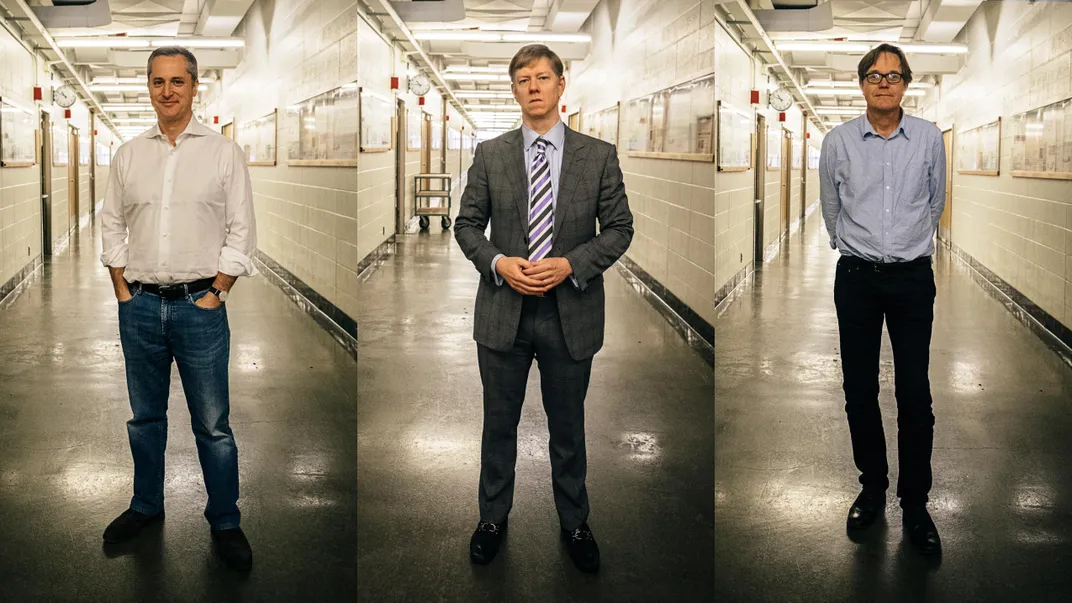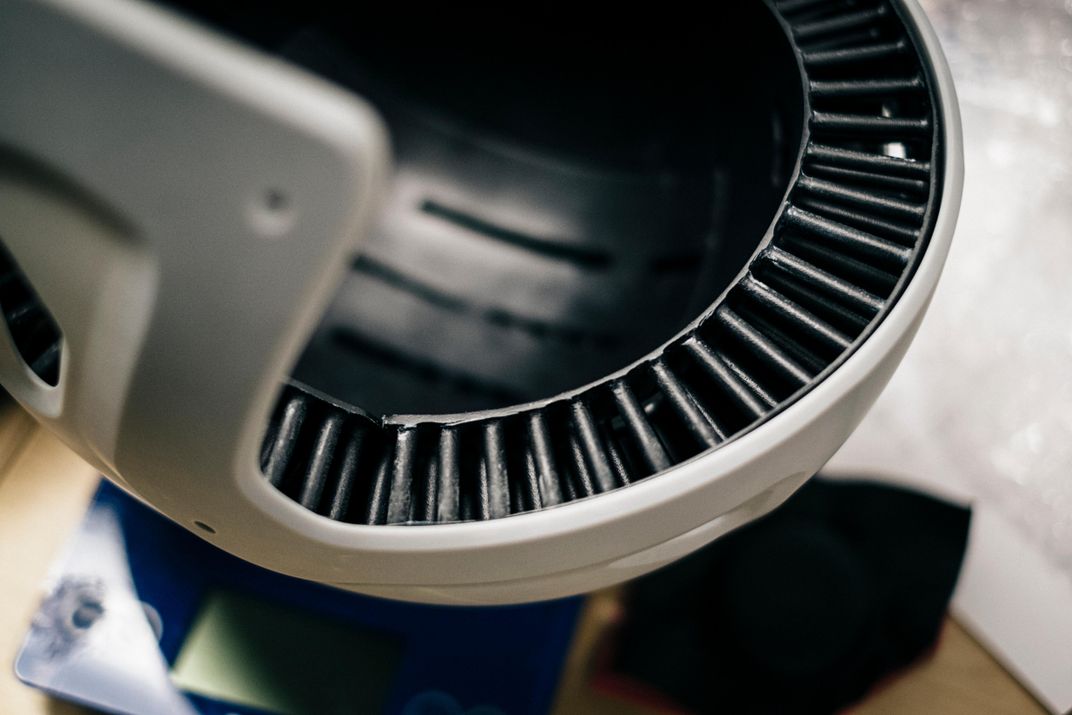Can This New Football Helmet Prevent Head Injuries?
The team behind the Zero1, a new four-layer helmet design, hopes so
/https://tf-cmsv2-smithsonianmag-media.s3.amazonaws.com/filer/1f/86/1f867896-b4ad-417c-88a5-295b09d89d9a/vicis_helmet_concepts_on_whiteboard.jpg)
Vicis, a Seattle-based company, is trying to reinvent the football helmet. For all intents and purposes, they have turned the traditional helmet inside out, giving it a squishy outershell and spring-like internal plates.
One in three NFL players reportedly suffers from some kind of brain trauma in his lifetime. A 2015 study from the Department of Veterans Affairs and Boston University found signs of chronic traumatic encephalopathy (CTE) in 96 percent of the former NFL players they tested. With grants from the NFL and funding from private investors, Vicis (meaning "change" in Latin) has spent two years working to develop a helmet that will better protect athletes brains from direct blows and rotational injuries.
In January, the startup unveiled the design for the Zero1, a four-layer helmet that crumples instead of cracking, diffusing the forces associated with head injuries. At about $1,500, it is expensive—the price tag is certainly a barrier for Pop Warner players. But later this year, Vicis is planning to make the helmet available to NFL and NCAA teams, with the eventual goal of bringing it to players at the high school level and below. Vicis Chief Executive Officer Dave Marver and Chief Medical Officer Sam Browd told us why they thought the standard helmet needed a re-think and how they brought one about.
What problem are you trying to fix?
Dave Marver: In football, the overall concussion rates are high, and helmets haven't really changed since the 1970s. We are developing an improved football helmet, the Zero1, to improve player safety, leveraging our expertise in engineering and medicine.
So, what is the Zero1? How does it work, exactly?
DM: Traditional helmets are comprised of two layers, including a hard polycarbonate outer shell and an inner foam layer. The Zero1 features a four-layer design. Each layer has an independent function while working in concert with the other layers to optimize protection. The outer layer, called the lode shell, is low-friction and hard to the touch, but it deforms upon impact like a car bumper. Next is the core layer, consisting of columns that slow impact forces and are effective when confronted by linear or rotational impacts. Below that is the arch shell, a dispersive layer that provides skull fracture protection. Finally, the form layer is constructed from advanced memory foam to provide customized fit. The arch and form layers are part of our Axis Fit System, derived from hundreds of NFL and NCAA players’ head measurements.
Has this approach been tried before?
Sam Browd: There are a couple of groups working on helmet design. MIPS is one, but they’re taking a very different approach. They have an inner shell that moves, and they’re working in other spheres, with other sports. We set out to build a better football helmet, so we wanted to look specifically at compression and rotational forces.
In what ways has the design been informed by research? How have you tested the helmet?
SB: The study of concussions is a young field. Even 10 years ago, we knew way less than we do today, so we’re trying to test the helmets to every possible standard. Helmets are currently drop tested, and we’re making sure they adhere to National Operating Committee on Standards for Athletic Equipment (NOCSAE) and Virginia Tech helmet rating standards. But there’s also new research about angular forces and rotational mechanics, which are now thought to be more likely causes for concussions, so we’re trying to account for those too.
What has the feedback been like?
SB: We reached out to team doctors, players and equipment managers to see what was important to them, and they gave us a lot of feedback. For instance, how do you take a helmet off, if you think a player is injured? We put in removable jaw pads so you can do that. Fit was important, so we delved into that. We looked at a lot of NFL medical literature on head sizes. Guys like Richard Sherman and Russell Wilson, they have different sized heads, but they were basically in the same helmet—they’d put a shim or air bladder in to make it fit. The feedback has been very validating. When we talk to the players, they’re very aware of concussions and wanting to protect themselves.

How did Vicis get its start? What’s your background, and how did you come together?
DM: Sam is a pediatric neurosurgeon. As head of the sports concussion program at Seattle Children’s Hospital, he was saddened by the many young athletes who were forced to retire from sports participation due to severe head impacts. He wanted to find a way to prevent these tragedies. Sam reached out to Seattle-based expert and chair of University of Washington’s mechanical engineering department, Per Reinhall. They then joined with me, an experienced CEO from the medical technology industry, and Vicis was born.
As you see it, what impact could the helmet have on the game of football?
DM: We want young athletes to be able to participate in football and other contact sports safely and without undue concern. We believe we can make a difference in athletes’ lives by introducing better equipment.

How would you describe the company’s success to date? How have people been responding to the idea?
DM: We have been humbled and encouraged by the response to the Zero1’s unveiling at all levels of football. We are working hard to complete development, so we can gain additional feedback on the field. This is our first helmet, and while we’ve worked very hard and gathered an immense amount of user feedback, our work is not done. We will continue to perfect and refine the Zero1 and bring forth better designs in coming years.
What comes next? What kind of technological and cultural changes do you see happening?
DM: We will introduce a helmet for high school and youth football players in 2017. We will also begin work on helmets for hockey and lacrosse. We are in discussions with industry partners to bring our technology to other sports, such as cycling and motorsports, as awareness of head health continues to grow.
/https://tf-cmsv2-smithsonianmag-media.s3.amazonaws.com/accounts/headshot/DSC_0196_2.JPG)


/https://tf-cmsv2-smithsonianmag-media.s3.amazonaws.com/accounts/headshot/DSC_0196_2.JPG)